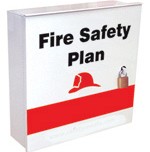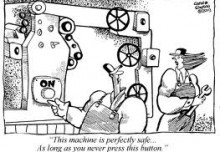 Establishing Annual Safety Goals Quick Guide
Establishing Annual Safety Goals Quick Guide
With the holidays and the end of the year approaching, now is the time to reflect on the previous year’s activities to appreciate successes and comprehend where improvements need to be made. Take time to understand where you’ve been and how that measures up to the goals of the coming year. Study the list of safety goals from the current year to understand which goals were met and which goals need to be reexamined or reevaluated. Reflect on progress made and continue that progress. Carefully study the goals that were not met, understand why they were not met and whenever appropriate reestablish safety processes and safety procedures to make the goals achievable. Where ever goals were met or exceed, then new goals need to be established.
Often times, we judge our performance on lagging indicators, such as number of OSHA recordables or lost work days. This will give an indication of where we’ve been, but does not help to predict where we are going. Lagging indicators are important, however they tell the story after an injury or incident has happened.
To help you get where you would like to go with your safety program, as you plan for the upcoming year use these questions to better understand the focus and establish safety program criteria. We are going to use 3 focus areas to help you outline and assemble a great safety program.
Focus area categories: 1) Requirements 2) Best Practice 3) Enhancement/Enrichment
Note: We are using the term “Best Practice” for the purpose of this article to demonstrate a technique for establishing a safety program. Our examples of best practice could be requirements for your industry and/or requirements specific to your company.
Safety Requirements
- Have all the regulatory requirements for your industry been met? such as environmental monitoring, environmental reporting, injury & illness reporting, emergency plan drills
- Have the required annual reviews been completed? such as lockout/tagout, bloodborne pathogens and permit required confined space
- Have all the required employee training needs been completed? such as emergency procedures, occupational noise exposure, respiratory protection, portable fire extinguishers
- Have new hires completed all the required training, both safety and operational?
- Have the new GHS requirements for Hazard Communication been met? click here for our GHS Hazcom blog
- How have the new Recording Keeping requirements affected your environment? click here for our record keeping blog
- Are the Injury and Illness Prevention Program Requirements being followed? click here for our illness prevention program requirements blog
Best Practice for your company and industry
- Can more leading indicators be added to the performance matrix? and if so…
- What proactive activities could be conducted to measure performance and provide performance indicators? suggestions may be safety training tracking, toolbox meeting and meeting results tracking and management audits click here for a related article called Reduce OSHA Recordables which explains toolbox meetings
- Do we have the proper signage and markings on equipment? such as signs and labels indicating danger, warnings and caution
- Are all the warning labels legible on equipment? be sure all danger, warning or caution signs are not blocked from view, rubbed out, warn or faded
- Are employees trained for fire emergencies, weather related emergencies or workplace violence? and if so…
- Do employees know what critical operations need to be carried out before leaving or sheltering? and if so…
- Do employees know where to go in the event of evacuation and what to do when they get there? such as an evacuation meeting site or shelter in place and check-in procedures
- Are your safety data sheets (formerly MSDS) up to date and are they updated to the revised GHS Hazard Communication Standard? be sure to have a process in place logging updates to your safety data sheets
Enhancement/Enrichment
- Are there some problem areas that need extra resources? Extra resources aren’t always people it may be supplies or equipment and keep in mind in some cases people rotation may help a situation
- Could a safety awareness program be instituted? such as SAFESTART which is an advanced safety awareness training that teaches employees how to recognize and avoid behaviors causing unintentional mistakes and errors
- Would a behavior based safety awareness program help? such as STOP which is a safety training observation program
Make your goals attainable. Remember to consider time and resources for your entire safety program including special projects and/or short term remediation. Don’t apply an overly aggressive goal such as a 50% reduction in OSHA recordables as you will be setting your program up for failure. Make sure your safety program has proper allowances to be successful.
Compile the answers for these questions and all other information specific to safety within the environment. As you build/rebuild your safety program, use the answers and ideas to challenge the company culture by challenging the employee’s way of thinking and their actions. Take the requirements and best practices and roll them into an enhancement/enrichment activity which will incorporate safety, raise safety awareness and create accountability making the company culture a safety goal oriented culture.













